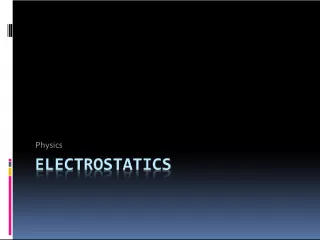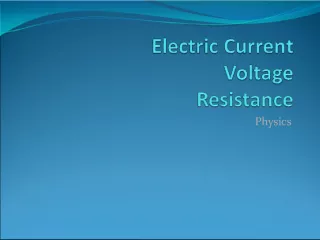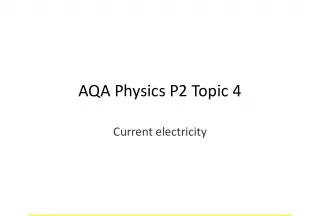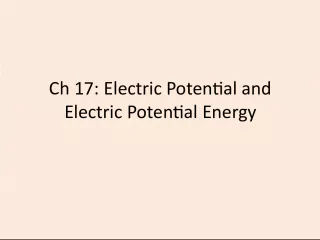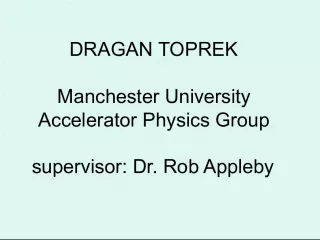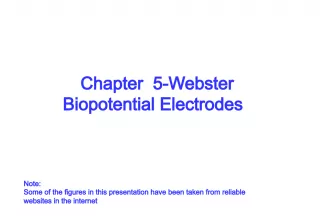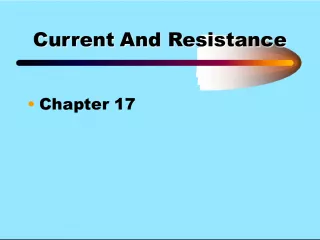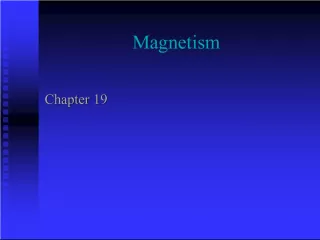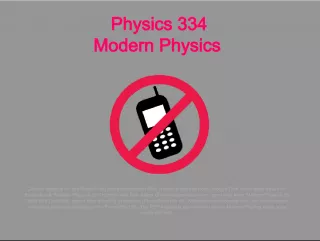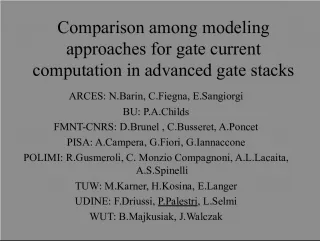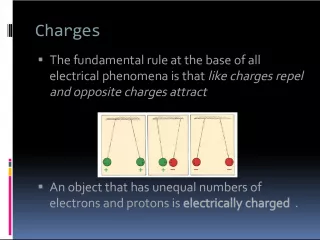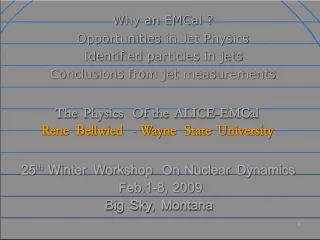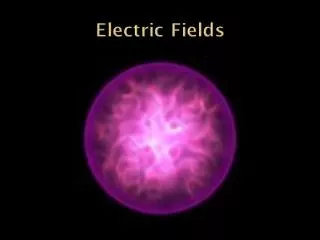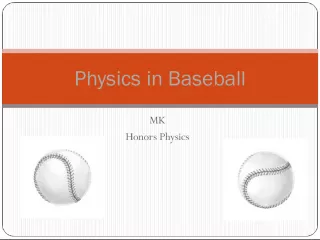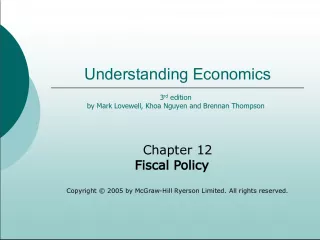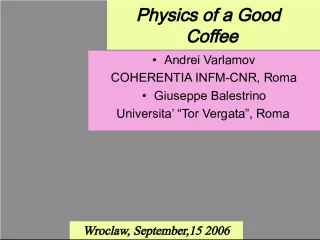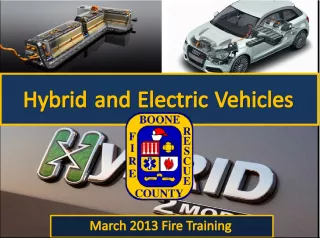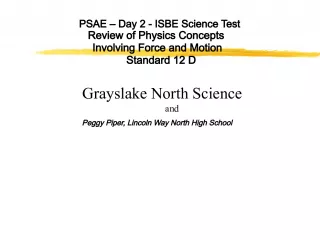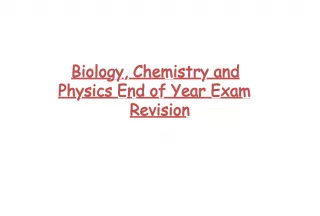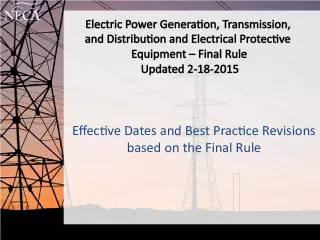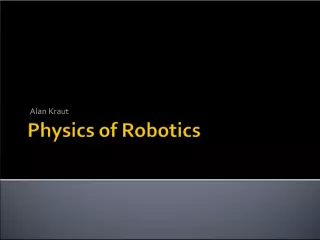Understanding Electric Charges and Currents in Physics


This chapter explores the fundamentals of electric charges, their interactions and movements, production, detection, and measurement of charges, properties of electric currents, and electric apparatus. The chapter also includes experiments showing the existence of electric charges and the different types of charges. Materials that can transfer charges are conductors, while insulators cannot. Grounding is also discussed.
- Uploaded on | 0 Views
-
 sariahvan
sariahvan
About Understanding Electric Charges and Currents in Physics
PowerPoint presentation about 'Understanding Electric Charges and Currents in Physics'. This presentation describes the topic on This chapter explores the fundamentals of electric charges, their interactions and movements, production, detection, and measurement of charges, properties of electric currents, and electric apparatus. The chapter also includes experiments showing the existence of electric charges and the different types of charges. Materials that can transfer charges are conductors, while insulators cannot. Grounding is also discussed.. The key topics included in this slideshow are electricity, electric charges, electric currents, conductors, insulators, grounding,. Download this presentation absolutely free.
Presentation Transcript
1. Electricity Chapter 19
2. Introduction n One of the oldest problem in physics n phenomena related to electric charge n deals with -interactions between charges -movement of charges --> (electric currents) -production of charges -detection of charges -measurement of charges -properties of electric currents -electric apparatus
3. Electric charges: a reality n Experiments showing the existence of electric charges - combing the hair - rubbing a balloon with a piece of wool - glass rod rubbed with silk - amber rubbed with wool - rubber rod rubbed with fur Two different kind of charges: positive and negative (one kind on the wool and the other type of the balloon) Like charges repel; unlike charges attract - Materials that are able to transfer charges are known as conductors - Materials that cannot transfer charges are known as insulators - Grounding --> giving the charges to the Earth
4. Conservation of charges n When creating a charge with a given sign we have to create the same amount of opposite charge n The amount of electric fluid should remain the same --> Benjamin Franklin F Objects are electrically neutral not because they contain no charges! --> they contain the same amount of positive and negative charges The law of charge conservation : In an isolated system the total charge is conserved total charge : algebraic sum of the charges
5. Induced Attractions n Attraction is more common than repulsion n Charged objects can attract uncharged ones u A charged rod attracts a neutral metal ball u Explaining attraction between charged and uncharged objects --> induced charges separation of charges in the uncharged object (it can be conductor or isolator)
6. Measuring the amount of charge: the electroscope n The electroscope can be used to detect charges - Working principle: same type of charges repel each other - Construction and working principle - The electroscope does not indicate the sign of the charges! Experiments with the electroscope :
7. The electric force n Calculating the magnitude of the attractive or repulsive forces between the charges n Variation with distance and amount of charges Coulombs law -Charles Coulomb 1785 Q 1 and Q 2 : the two charges (measured in coulomb : C ) r : distance between the charges k : 9 x 10 9 N m 2 /C 2 Coulombs constant
8. Difference and Similarities between Electricity and Gravity n Mathematical form of the Coulomb law and law of gravitation very similar - gravitation is always attractive (no negative mass) - electrical force can be both attractive or repulsive - Electric force is dominant in the atomic world - Gravitational forces dominates on the macroscopic scale: people, planets, galaxies - Electric forces are more stronger !!!
9. Lightning - During the storm clouds develop a separation of electric charge - Tops of the clouds positively, bottoms negatively charged - The ground positively charged due to the repulsion of the electrons in the ground -downward moving electrons - upward flowing positive charges
10. The Electric Field n Electric charges modify the space around them--> concept of electric field n This electric field is manifested by the force acting on charges n Concept of electric field is analogous with the concept of gravitational field n Definition : The value of the electric field (E) at any point in space is equal to the force experienced by one unit of positive charge at that point n electric field is a vector: - electric field can be represented by a set of arrows around the object (size of the arrows representing the magnitude of the field) - electric field can be represented by a set of continuous lines starting from positive charges and ending at negative ones (density of the lines ~ intensity of the field) Units: N/C
11. Electric potential n Characterizes energetically the electric field n Similar quantity to the gravitational potential n Definition of electric potential energy : For each point, the electric potential energy is equal to the work done against the field in bringing the charged object from some zero reference location to that point (if we do the work EPE> 0, if the field does the work EPE <0) - Its value does not depend on the path but on where we choose the zero reference location at a distance r from Q - Measured in : Joules (J) zero level at infinite n Definition of the electric potential : electric potential energy of unit charge (EPE/charge) at a distance r from Q - Units: J/C= Volt (V) n By knowing the electric potential difference between two points we can calculate the work done by the field when moving a given charge between the two points
12. Summary n Objects become electrically charged or uncharged by transferring charges n Two different charges exist: positive and negative n In Isolated systems the total charge is conserved n Like charges repel, unlike charges attract n The electric force between two charges is given by the Coulomb law n Electric charges are surrounded by an electric field equal to the force experienced by a unit charge n electric potential characterizes energetically the electric field n The electric potential energy gives the work made against the electric field, when we bring the given charge from a zero reference location to the given point n The electric potential equals the electric potential energy divided by the objects charge Home-work Assignment : Part I: 492/3-8,11,15-27; 493/28-31; 495/2-12 Part II: 493/33-35, 37-42; 494/43-48,50-58; 495/59,60,13-18,23,24
